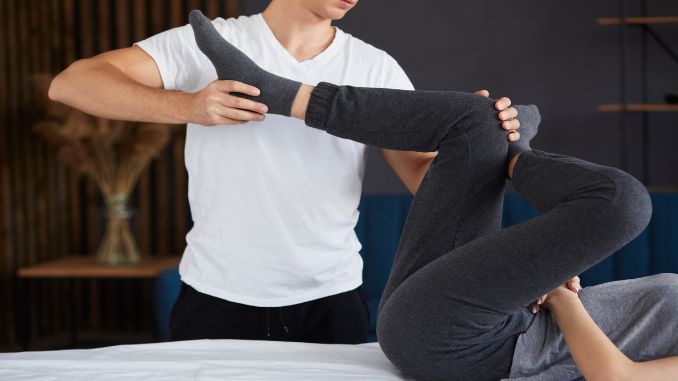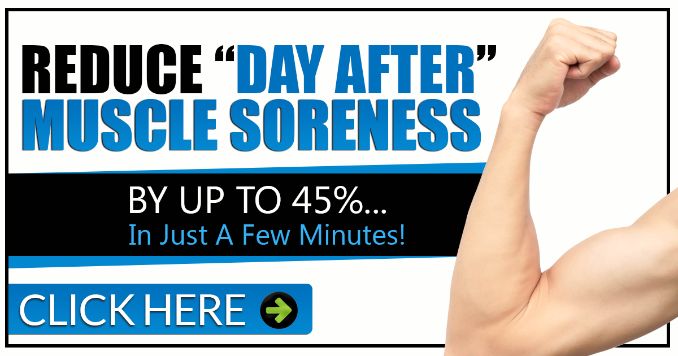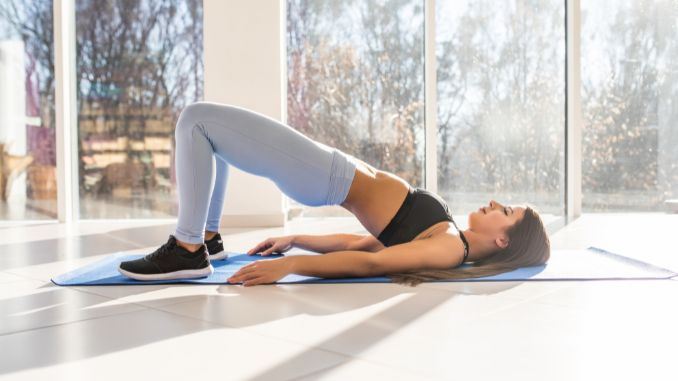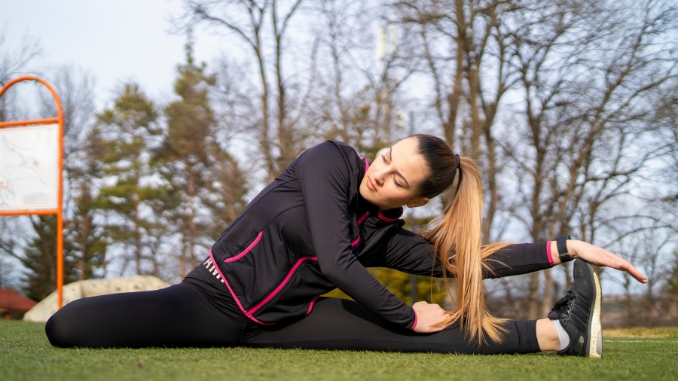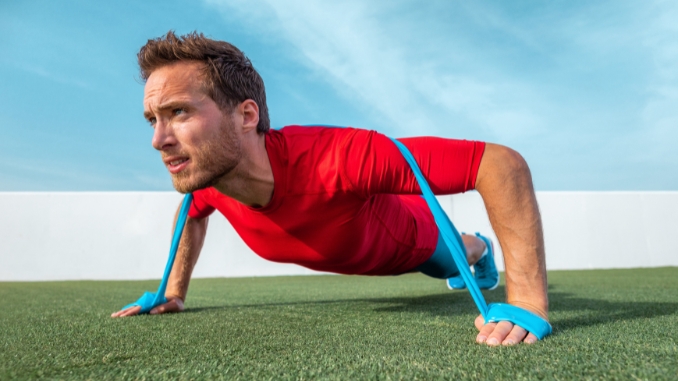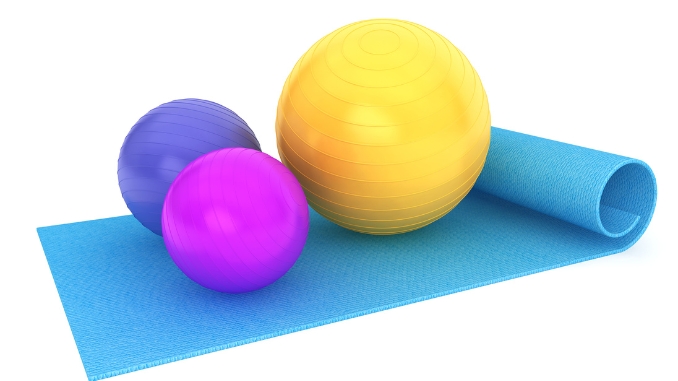Discover the power of post-rehab exercises in physical therapy, "Elevate, Strengthen, Recover." Learn how targeted routines, physical therapy exercises and personalized strategies go beyond initial rehab, supporting long-term well-being.
Explore the science and art behind these exercises, uncovering their essential role they play in sustaining recovery. Dive into our informative content to understand the delicate balance between elevation, strength-building, and overall wellness.
Join us on a journey through the transformative continuum of care, where simple yet effective exercises become the key to a healthier, stronger you. Elevate your understanding of post-rehab exercises and embrace the path to lasting recovery.
What are Post-Rehab Exercises?

Post-rehab exercises refer to specific exercises and training programs designed for individuals recovering from surgery or injury. These exercises aim to improve muscle weakness, fine motor skills, pain, limitations, and lack of use that may result from the surgery or injury. Post-rehabilitation training focuses on assessing the individual's needs and applying functional exercise techniques to complement their rehabilitation process.
The goal of these exercises is to minimize pain, improve strength, and enhance overall quality of life. These programs may include basic exercises, prescribed exercises from therapists or doctors, imbalance correction, and direct training. The objective is to provide safe and effective fitness and conditioning programs for individuals with various medical conditions, bridging the gap between healthcare and fitness.
The Importance of Post-Rehab Exercises in Physical Therapy
Physical therapy plays a crucial role in the recovery process after surgery. It helps improve mobility, balance, and pain management, which are often affected by surgery. Surgeons can cause temporary limitations in mobility, muscle tightness, and swelling, which physical therapy helps to restore. Physical therapists use various interventions such as exercises, stretches, and therapy techniques to improve function and reduce post-surgical pain caused by inflammation.
Moreover, physical therapy can prevent secondary complications such as infection, blood clots, and a decline in physical health. Following the tailored plan provided by the physical therapist is essential for regaining strength and returning to normal life.
Physical therapy services are widely available in multiple locations, and a physician's order is typically required for care. In short, post-rehab exercises in physical therapy are paramount for a successful recovery after surgery.
Benefits of Post-Rehab Exercises
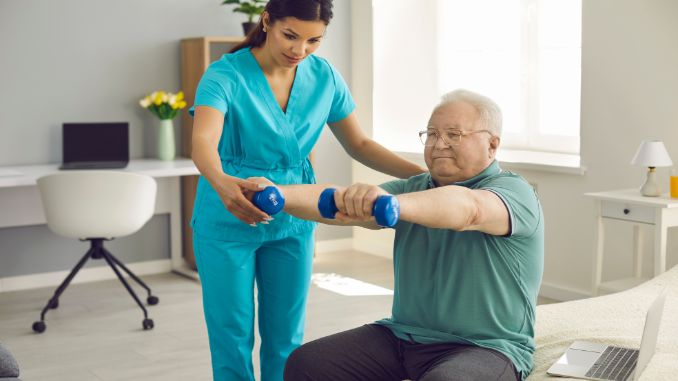
Post-rehab exercises, providing numerous benefits for individuals recovering from surgery or musculoskeletal disorders, can be outlined as follows:
- Regaining Strength: One of the primary advantages is restoring strength at the surgical site, thigh muscle, and throughout the body.
- Improved Balance and Control: Under the guidance of a trained therapist, strategic exercises can enhance balance and control.
- Increased Mobility and Flexibility: These exercises contribute to increased mobility and flexibility. The World Health Organization (WHO) emphasizes the importance of rehabilitation ¹ in improving everyday activities, which includes exercises to enhance mobility and flexibility.
- Scar Tissue Management: Strategic exercises can make scar tissue more pliable.
- Pain and Inflammation Reduction: Post-rehab exercises address pain and inflammation, thereby reducing the need for opioid medication. According to research from Stanford Medicine, early physical therapy ², which includes post-rehab exercises, can reduce the risk and amount of long-term opioid use.
- Complication Prevention: By safely resuming physical activity, these exercises lower the risk of complications and promote healing.
- Evidence-Based Treatment: Physical therapy is an evidence-based treatment supporting stroke patients in regaining mobility and function, expediting the recovery process.
Common Post-Rehab Exercises for Different Body Parts
Post-rehab exercises can vary depending on the injury or surgery, but here are some common post-rehab exercises for different body parts. Before starting any exercise program, especially after rehabilitation, always ask for guidance from a physical therapist or healthcare professional.
Upper Body:
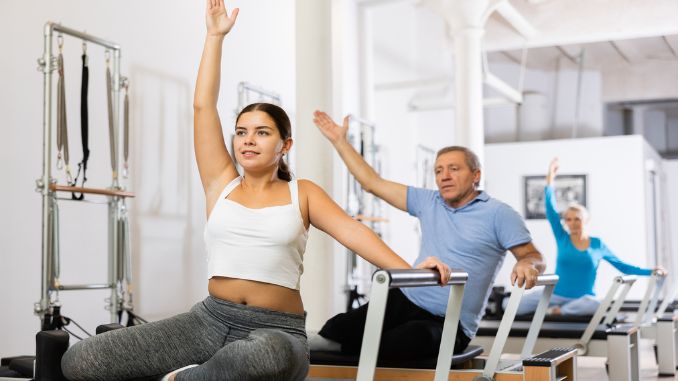
1. Shoulder Rolls
Begin in an upright standing position with your feet hip-width apart, maintaining good alignment with your head, shoulders, hips, and legs. Step forward on your left leg and engage your core. Lift your shoulders, then roll them down and back until you feel resistance in your shoulder blades. Lower your shoulders to the starting position, relax, and repeat the movement in the opposite direction. Complete ten repetitions.
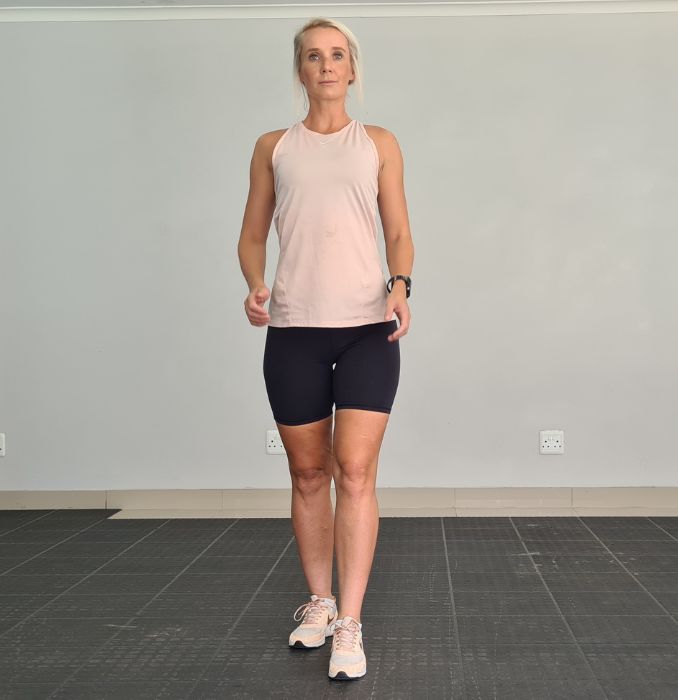
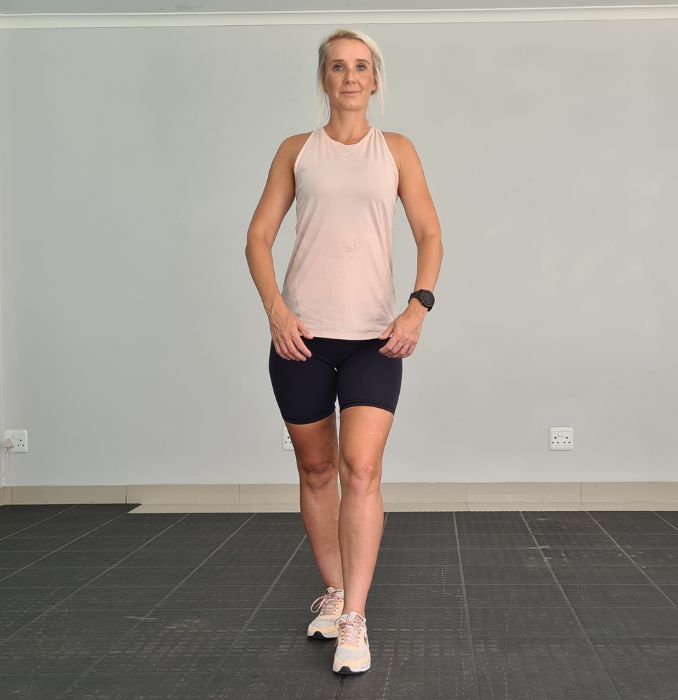
2. Wrist Circles
Begin by making a loose fist. Lift your wrists in front of you, start making small circular movements and gradually work your way up to larger circles. Repeat 5 times each in each direction.
3. Push & Pulls
Begin in an upright standing position with your feet hip-width apart, maintaining good alignment with your head, shoulders, hips, and legs. Engage your core. Bend your knees and extend your arms at chest height, with your palms facing each other. Pull your arms back, keeping them close to your body and squeezing your shoulder blades together at the end position. Repeat the movement. Start with 1 set of 5 repetitions.
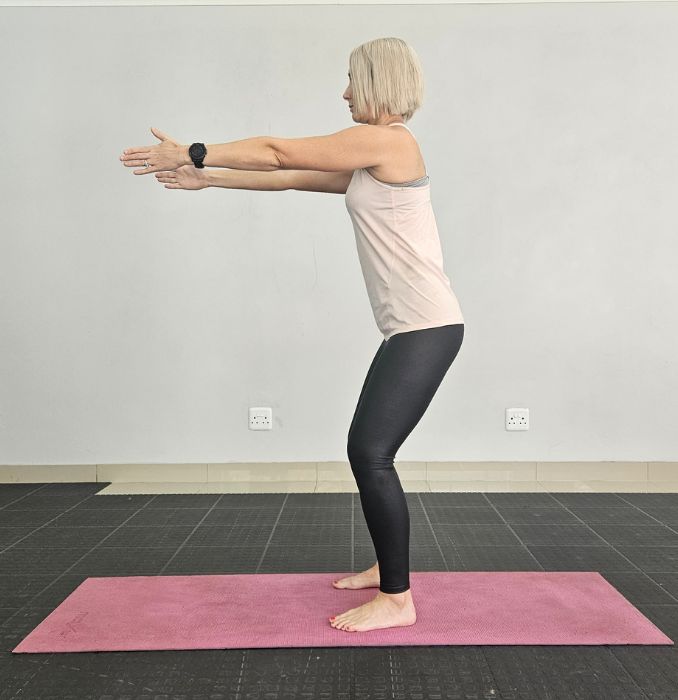
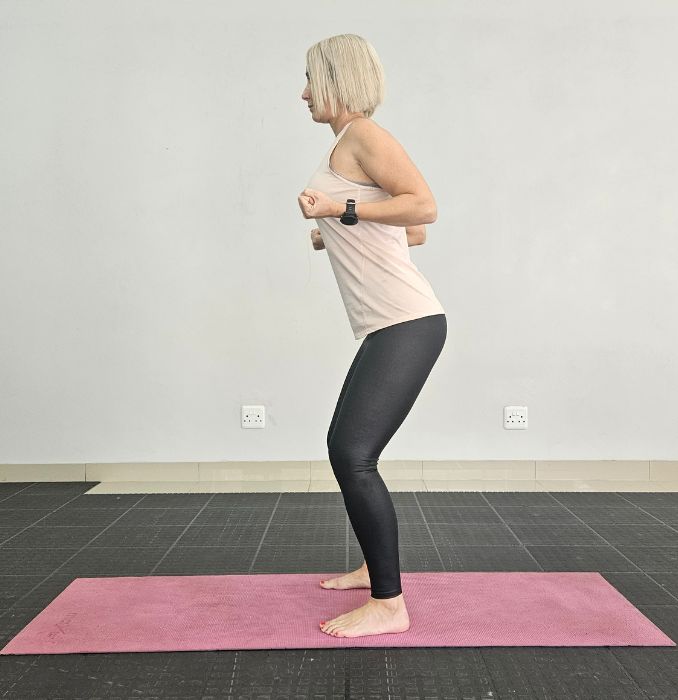
Lower Body:
1. Clamshells
Lie on your side, stacking your legs on top of each other and feet together. Bent your knees with your ankles in line with your hips. Anchor your elbow and rest your head on your bottom hand, then place your top hand on the floor for stability. Lift your top knee towards the sky, as high as your body allows, without shifting your hips and while keeping your feet together. Lower your leg and repeat 10 times. Relax and repeat on the opposite side.
You may use resistance bands to add more resistance.
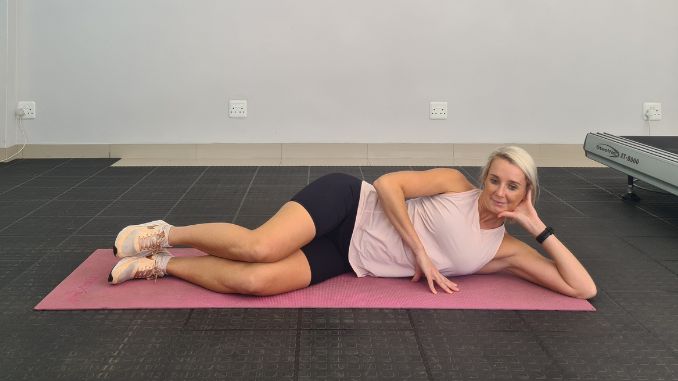
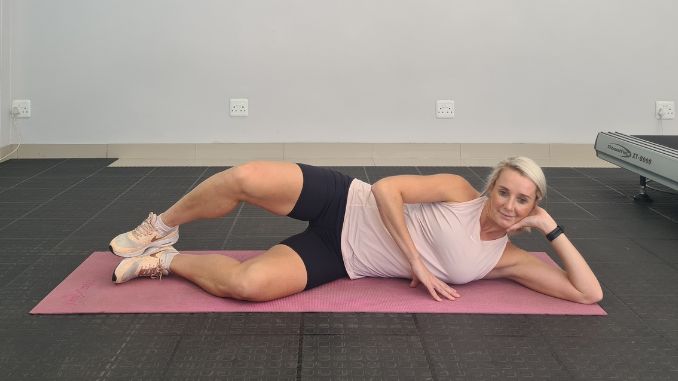
2. Standing Single Knee to Chest
Begin in an upright standing position with your feet hip-width apart, maintaining good alignment with your head, shoulders, hips, and legs. Engage your core. Shift your weight onto one foot and lift your opposite knee to your chest, use your hands to pull your knee closer to your chest. Lower your leg to return to the starting position and repeat the movement on the opposite side. Start with 1 set of 5 repetitions on each side.

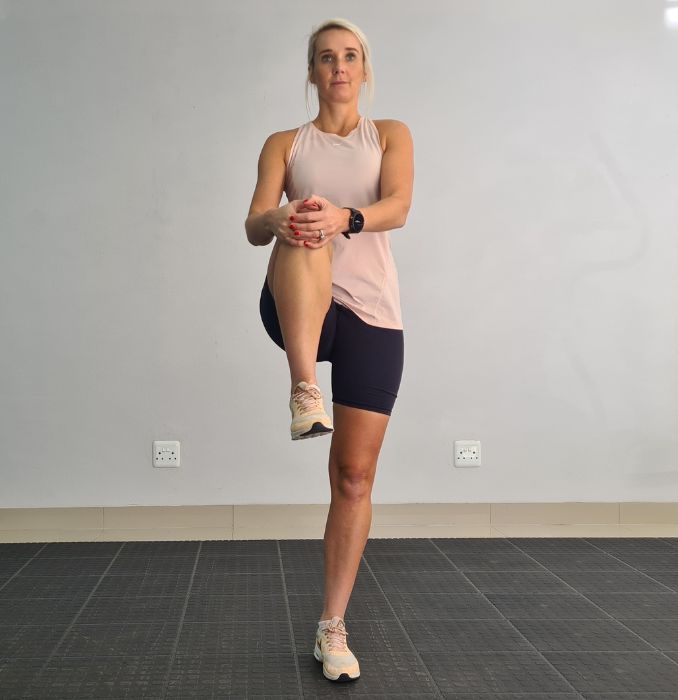
3. Ankle Circles
For this exercise, you can use a chair, bench, stability ball, or anything stable that is not too high or low to sit comfortably.
Begin in an upright sitting position with your feet flat on the floor, maintaining good alignment with your head, shoulders, and hips. Place your hands on the side of a chair for balance if needed. Engage your core. Lift one foot, ideally at hip height, and rotate your ankle in a circular motion in both directions. Slowly lower your foot to return to the starting position. Repeat the movement on the other leg. Start with 1 set of 5 repetitions on each side.
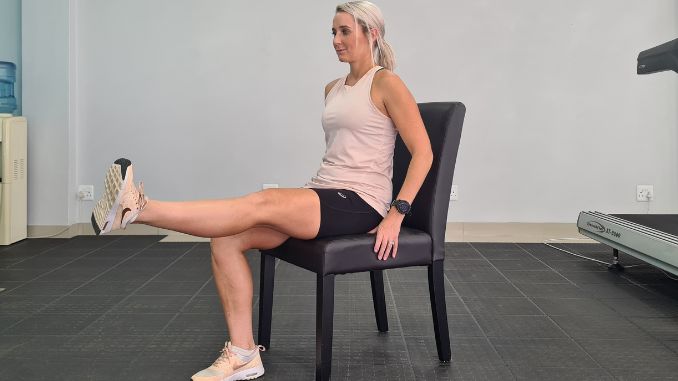
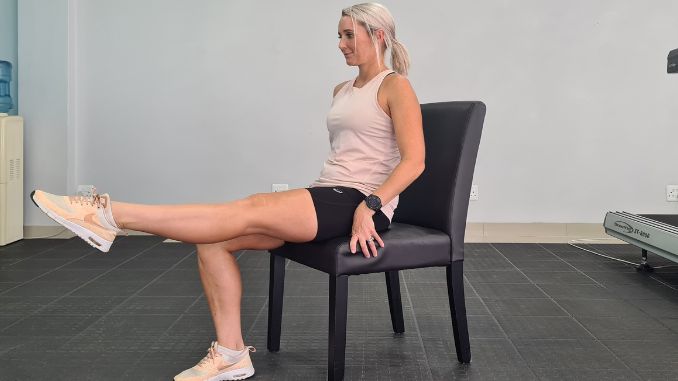

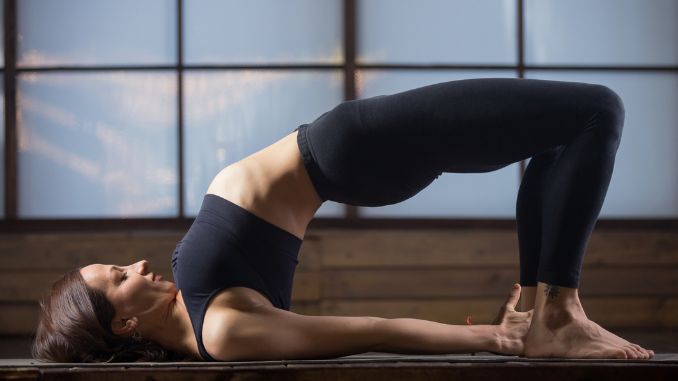
1. Standing Hip Flexors Stretch
Begin in an upright standing position, maintaining good alignment with your head, shoulders, hips, and legs. Place your hands on your hips and take a big step forward with one foot, keeping your knee straight and toes pointing straight ahead. Tighten your abdominal muscles, then shift your hips forward and back by slightly bending and straightening your back leg. Hold this position for a few seconds. Return to an upright standing position and repeat the movement on the opposite side.
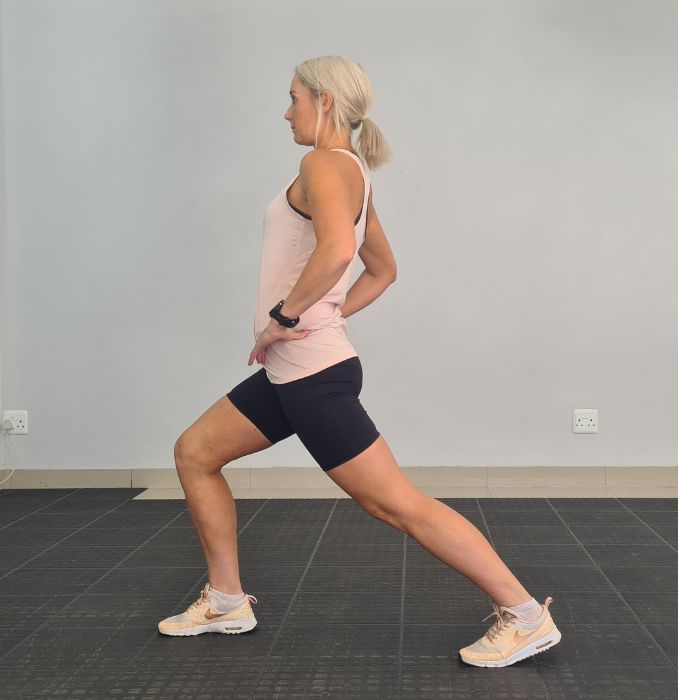
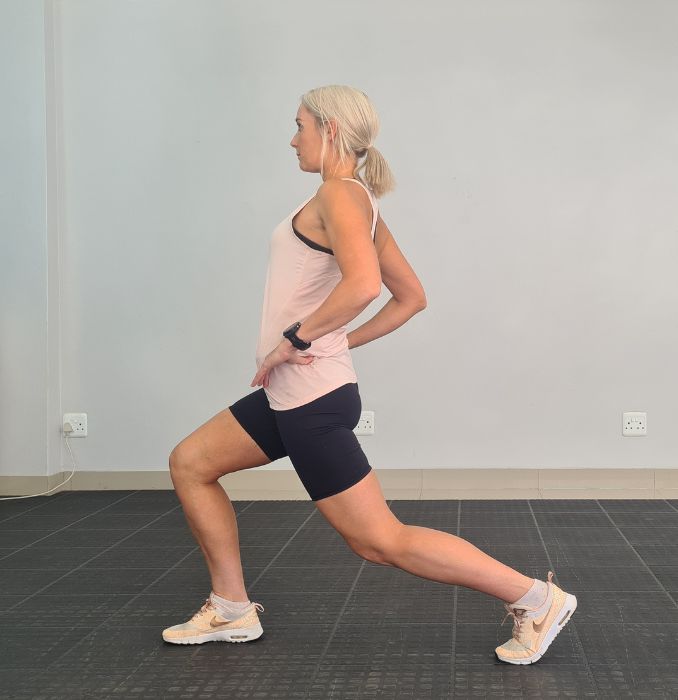
2. Cat-Cow
Begin in a 4-point position with your hands beneath your shoulders and your knees under your hips. Maintain good alignment of your head, shoulders, hips, and knees. Engage your core. Arch your back as you tilt your head upward. Then, tuck your tailbone in and round your spine as you lower your head downward. Repeat the sequence of movements.

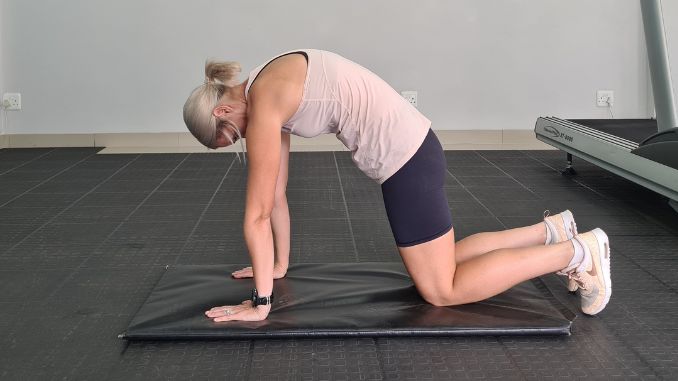
3. Bridge
Lie on your back with your knees bent and your feet flat on the floor, relaxing your upper body. Place your arms at your sides and contract your abdominal area. Push from your heels to lift your hips, squeezing your glutes at the top position. Hold this position for several deep belly breaths in through your nose and out through your mouth. Relax and return to the starting position.
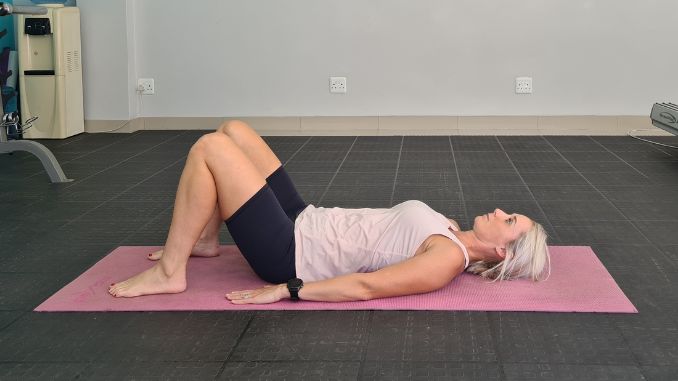
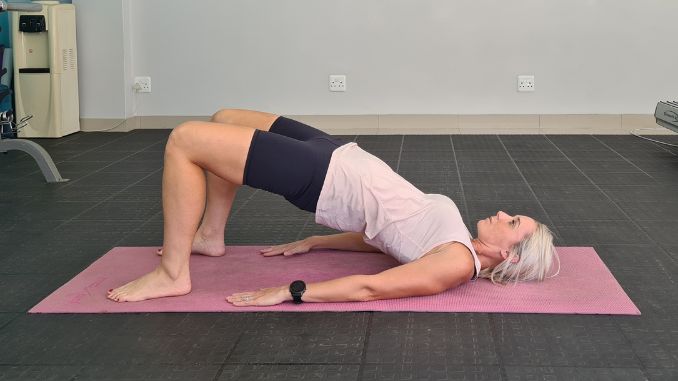
General:

1. Single Leg Balance
Begin in an upright standing position, maintaining good alignment with your head, shoulders, hips, and legs. Wrap the mini band around your legs, just above your knees. Engage your core. Shift your weight onto your one leg and extend your opposite leg forward, working on balancing your body weight on a straight leg. Hold this position for 20 seconds. Relax and return to the starting position. Repeat the movement on the opposite side.
To make the exercise easier, grab the back of a chair for balance.
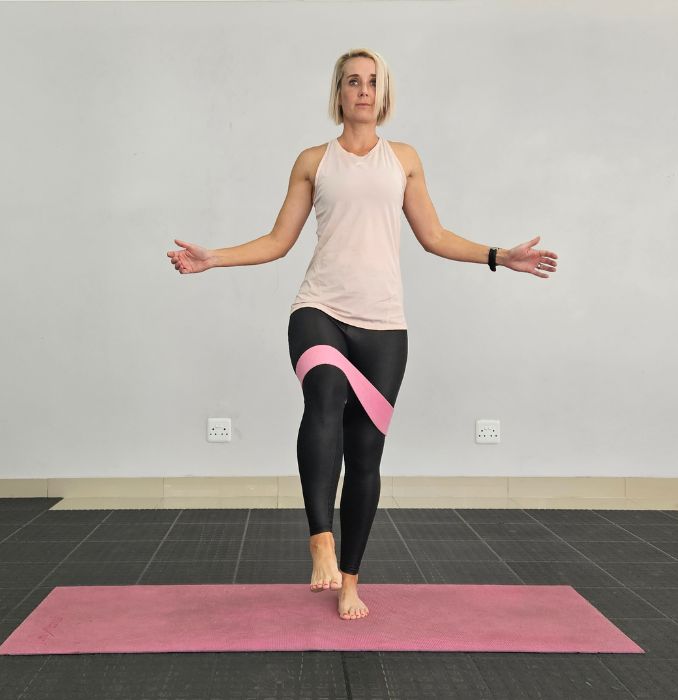
2. Bird Dog
Begin in a 4-point position with your hands under your shoulders and your knees under your hips. Contract your abdominal area. Take a deep breath and lift your left arm to be in line with your shoulder as you extend your opposite leg behind your body. Keep your left arm, shoulders, hips, and right leg parallel to the floor. Lower your arm and leg to return to the starting position. Repeat the movement on the opposite side.
To make the exercises easier, gently tap the toes of your right leg to the floor.
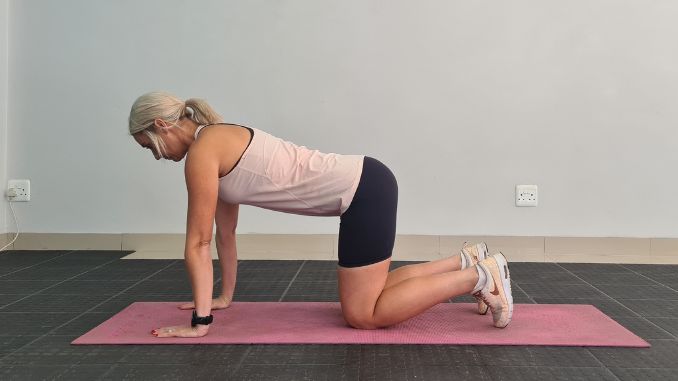
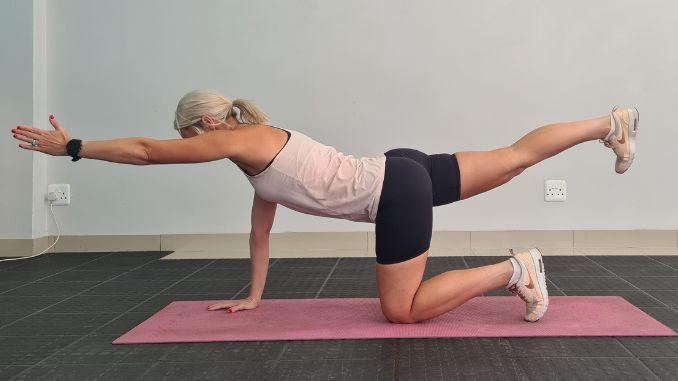
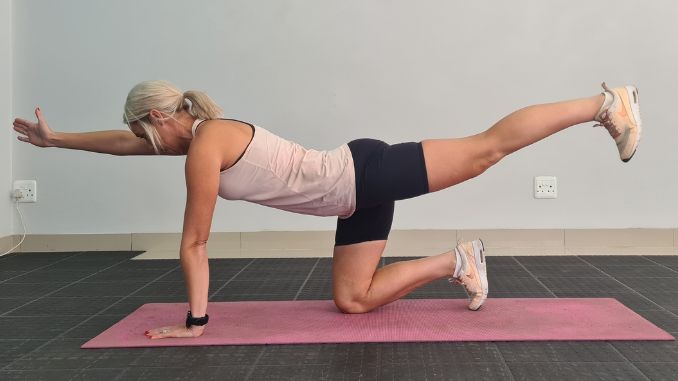
3. Squat
Begin in an upright standing position with your feet shoulder-width apart, maintaining good alignment with your head, shoulders, hips, and legs. Bring your hands in front of your body at chest height or place your hands on your hips. Engage your core. Bend your knees, and hinge through your hips to move into a squat position. Keep your knees behind your toes. Raise back to an upright standing position, squeezing your glutes at the top. Repeat the movement and complete 10 repetitions.
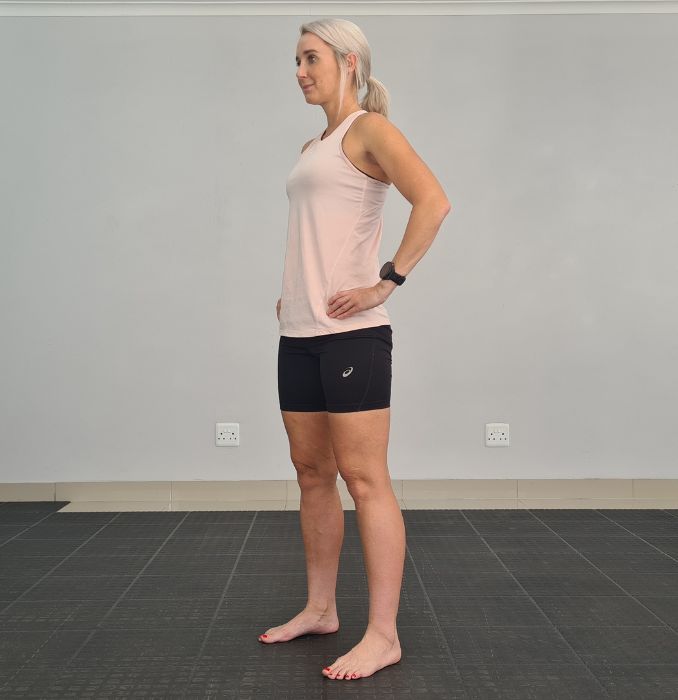
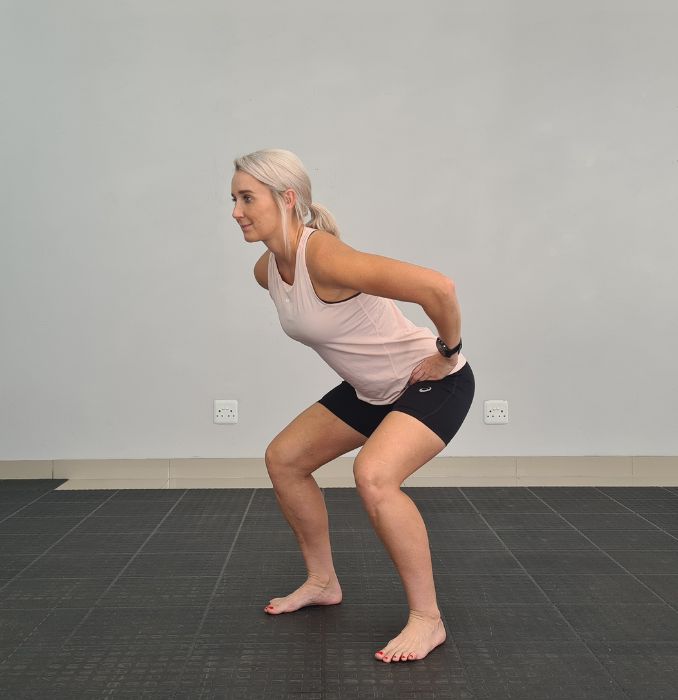
Remember, the intensity and type of exercises should be designed to the individual's specific condition and progress.
Designing a Post-Rehab Exercise Program
Designing a post-rehab exercise program requires careful consideration and planning to ensure optimal results. After establishing boundaries, fitness professionals can focus on restoring muscle performance capabilities such as endurance, strength, and power. This can be achieved through a combination of targeted exercises that address the specific needs and limitations of the individual.
By incorporating exercises that promote functional movements and target the affected areas, post-rehab clients can regain their strength and mobility. It is important to tailor the program to the individual's abilities and progress gradually to avoid any setbacks or injuries. Additionally, regular monitoring and adjustment of the program based on the client's progress is essential for long-term success.
By providing a structured and personalized exercise program, fitness professionals can support their clients in their post-rehab journey towards full recovery and improved overall fitness.
Precautions and Considerations for Post-Rehab Exercises

When considering post-rehab exercises, it's crucial to take several precautions and considerations into account, which can be outlined as follows:
1. Mobility and Tissue Stabilization
A key principle involves maintaining mobility while stabilizing injured tissues, facilitating successful rehabilitation, and preventing muscle rigidity.
2. Understanding Tissue Response
It's important to comprehend how tissues respond to stress and mechanical loading to strike a balance between restoring function and minimizing the risk of re-injury.
3. Optimal Stress Levels
Tissues adapt to changes in stress levels, emphasizing the need to avoid both too little and too much stress, as both can lead to negative outcomes.
4. Mechanotransduction Hypothesis
The mechanotransduction hypothesis explains how mechanical loads on a cellular level result in biochemical signals that strengthen tissues.
5. Pain Management

Pain can influence movement patterns and motor control, making it crucial to address and manage shoulder, neck, and back pain during post-rehab exercises.
6. Teaching Movement Through Learning Stages
Rehabilitation considerations include teaching movement through different stages of learning to enhance effectiveness.
7. External and Goal-Focused Cues
Using external or goal-focused cues is also considered in the rehabilitation process.
8. Role in Effective Exercises
These precautions and considerations are vital in ensuring effective post-rehab exercises and optimal recovery.
Tips for Maximizing the Effectiveness of Post-Rehab Exercises
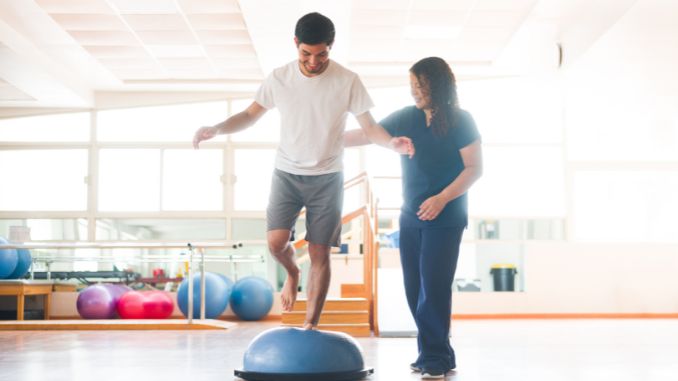
Maximizing the effectiveness of post-rehab exercises is pivotal for individuals who have undergone rehabilitation for injuries or medical conditions. To achieve this, the following points can be emphasized:
1. Clearance and Boundaries
By adhering to these principles, fitness professionals contribute significantly to individuals' successful and tailored rehabilitation, promoting optimal recovery and improved overall fitness.
2. Restoring Muscle Performance
Fitness professionals play a vital role in restoring muscle performance capabilities, including endurance, strength, and power.
3. Tailored Exercise Programs
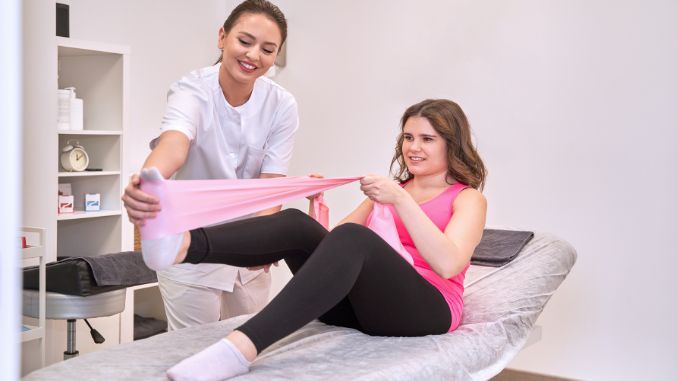
Designing appropriate exercise programs tailored to the individual's needs and goals is key to maximizing the benefits of post-rehab exercises.
4. Consideration of Factors
When designing a resistance training program, factors such as age, sex, medical history, previous training background, and injury must be considered.
5. Proper Assessment
A proper assessment of the athlete, their sport, and adherence to training program principles is essential for designing an effective post-rehab program.
6. Communication and Collaboration
Ensuring communication and collaboration among all individuals involved in the athlete's care is vital for a comprehensive approach to post-rehab exercises.
Conclusion
In wrapping it up, post-rehab exercises are like the finishing touches on the road to recovery. Think of them as your personal journey back to full strength. They do more than just bring back flexibility and muscle power; they boost your confidence and make you feel good overall. Creating a workout plan that suits you involves setting achievable goals and staying flexible with your approach.
Being consistent in your efforts is crucial, just like listening to your body and taking it one step at a time. These exercises aren't just about getting back on your feet; they're about coming back stronger, physically and mentally.
Elevate, Strengthen, Recover with the Art of Post-Rehab Exercises in Physical Therapy! Check out our Recovery Workouts, designed to accelerate your healing process. Plus, check out our recovery workout program to maximize your progress.

